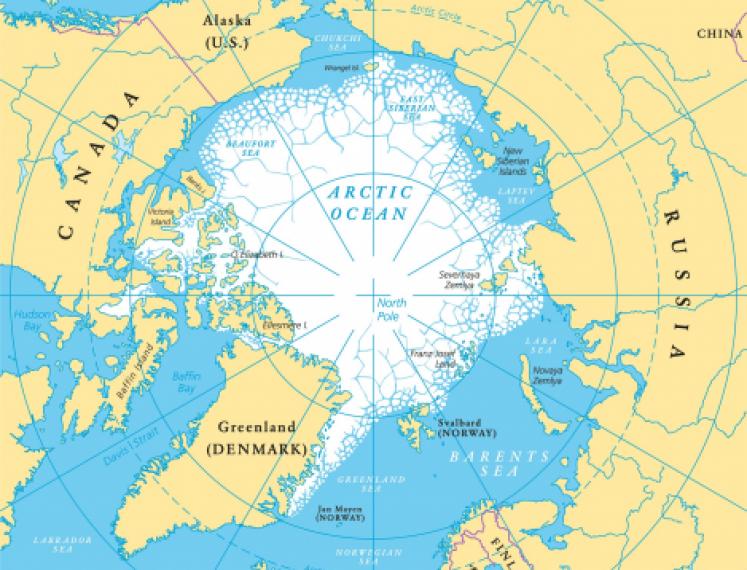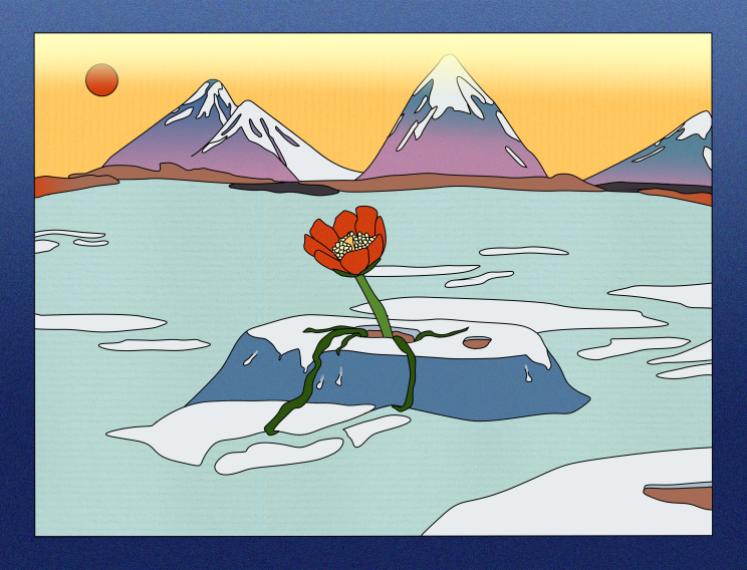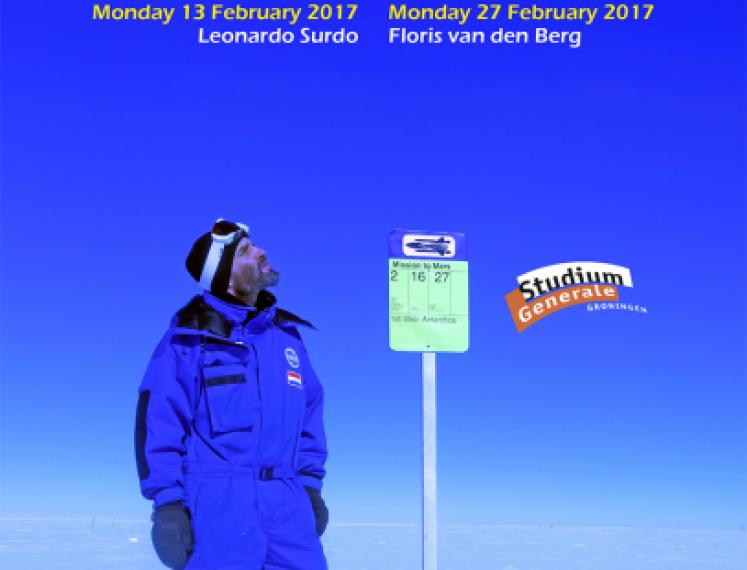
A Closer Look at the Arctic
Climate change is happening all over the globe. One of the most visible consequences is the melting sea ice on the North Pole, causing the sea level to rise around the world. But how did these changes work out on a local level? On October 14, we met at the Rabo Studio of Forum Groningen to deliberate on the subject during Kenniscafé Meanwhile, On the North Pole with political scientist Christoph Humrich, ethnoarchaeologist Sean Desjardins and social scientist and guide Annette Scheepstra. The conversation was moderated by Thandeka Kramer-Wolf.
Kramer-Wolf starts off with the question: what do we mean when we talk about the North Pole? We hear a lot of different terms when we speak of the most northern part of the world: North Pole, North Pole area, the Arctic or Arctic area. Are these terms interchangeable, or do they mean different things? Annette Scheepstra explains that when we talk about the North Pole, we simply refer to the little ‘dot’ on top. However, when we talk about the North Pole Area or the Arctic area, it is less easy to define its borders. These could mean different things. Another term used, which is more easy to define, is the so-called ‘Arctic Circle’. In the Arctic Circle, the sun doesn’t set during midsummer and doesn’t rise during midwinter.
Visiting the Arctic
It is not a coincidence that we’re here in Groningen today having this conversation about the North Pole. We have had an Arctic Centre in Groningen for over fifty years. Even though the Netherlands is not part of the Arctic, a connection can be found in history. Scheepstra explains that the Wadden Sea became an important area for scientific research during the 70s. Following the footsteps of whalers and bird migration, we came to the Arctic for research.
Nowadays, people still visit the Arctic for research purposes, but also for other experiences, like Midsummer nights, Northern light, or meeting a polar bear in the wild. The Arctic is actually not as cold as the Antarctic. You could very well spend a summer holiday in Spitsbergen, and though it would not quite be the average beach vacation, with temperatures around five degrees (because of the sea) this place is much more pleasant to stay than the Antarctic.
Local changes
Of course, we didn’t meet up in this Kenniscafé to dream about our own potential visits to the Arctic area, but to discuss a more serious matter: climate change and its local effects. Sean Desjardins, who studies Inuit relationships in West Greenland and Arctic Canada, defines the local changes as an increase of variation in weather: changes are more frequent and more extreme, and are therefore less predictable. This has an effect on the local communities, like the Inuit, who rely on the presence of land, open water and ice to move around and get to their resources.
Several developments might affect their communities: animal migration or extinction will lead to less species to hunt, melting sea ice makes it difficult to get from A to B safely and maps are constantly outdated. In addition, there is less water security as some grounds can no longer hold water and there is an increase in health issues caused by mosquitos, new inhabitants of the area attracted to the higher temperatures. The local effects of climate change differ a lot as the Arctic is a widespread area.
Desjardins emphasizes climate change is not something completely new and that the local culture is dynamic and resilient. We can learn from the indigious people who lived in the area for many generations. How did they adapt to changes in history? Scheepstra and Desjardins both stress that it is important to make Arctic research interdisciplinary and that we have to collaborate with local communities. This won’t be an easy task as funding is mostly provided for science methods, but using different knowledge systems and working together as equals is an important aspect in solving these problems for the future.
Political landscape
As we mentioned before, the Arctic area is a widespread area. From western part of Russia to the Northern part of Norway: these areas differ a lot. Not only is the landscape very diverse, but they are also on very different political grounds. To even approach a problem as big as climate change, it is necessary to collaborate between governments. An example is the Arctic Council, which has an advisory role in protecting the Arctic. However, the melting sea ice also opens up new possibilities for the area, such as new shipping lanes and mining options. These might provide necessary and valuable resources for the future. According to Christoph Humrich, governments are not so keen on protecting the Arctic as they don’t know yet what they might get from it. And once an area gets the status of a marine protected area, there is no way back.
Humrich also warns for the political representation of facts and figures when we talk about the Arctic. Mining options might not be that interesting as it is very expensive to mine in this area and the prospects for new shipping lanes are often overblown. In addition, we should be aware of the political relationship between the ‘West’ and Russia when we look at certain numbers. The Arctic shouldn’t become a battleground for politics and economic interests. To address climate change, it is necessary to cooperate.
Want to know more ? Watch the recording of the full conversation.


